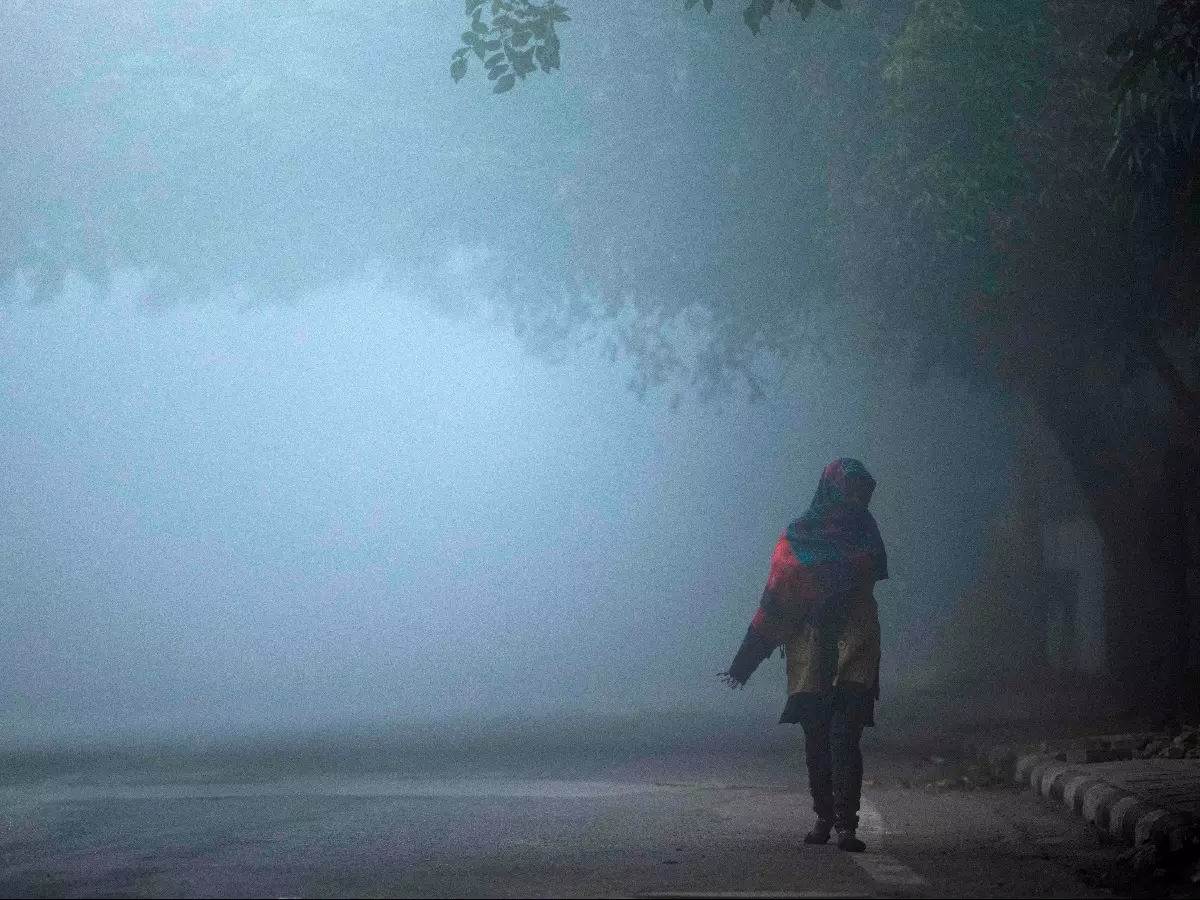India May See Coldest Winters In Coming Jan-Feb Due To La Nina: Here's How To Cope With It
As per the Bloomberg report, January and February will be particularly cold in some northern states with temperatures set to fall as low as 3 degrees Celsius before recovering.

India has been battling spike in extreme weather events from heavy rainfall leading to floods to summers causing heatwaves.
In September and October this year, the country recorded the highest number of cases of extreme weather events during the last five years due to the late withdrawal of the southwest monsoon and higher-than-normal low-pressure systems. And, now a new forecast indicates a much colder winter ahead.
A weather phenomenon that typically delivers harsher winters is on the way and expected to add to Asia¡¯s energy crisis. And, north India may witness the chilliest/ extremely cold winter due to the La Nina that has been emerging in the Pacific Ocean.
 Storyful
Storyful
What is La Nina?
The La Nina weather pattern causes frigid winters in the northern hemisphere. It is likely to hound parts of India with extremely cold winters. As per the Bloomberg report, January and February will be particularly cold in some northern states with temperatures set to fall as low as 3 degrees Celsius before recovering.
As La Nina threatens to disturb global weather patterns, the effects are visible as India witnessed the seventh-most delayed monsoon retreat this year since 1975.
 NCOC
NCOC
In the past, the southwest monsoon has been delayed five times in the span of a decade beginning from 2010 followed by 2016, 2017, 2020 and 2021. Experts have raised concerns over the continuous warming of the seas which is leading to an overhaul of the system felt across India.
What is the new forecast warning?
The new forecast warns of an impending La Nina effect that will lead to a major dip in temperature across north India in January, February 2022.
Most importantly, the nation is now anticipating a drier period after the end of the monsoon season. Key coal mining regions suffered flooding in recent months that triggered a squeeze on supply of the fuel used to produce about 70% of the nation¡¯s electricity.
 AFP
AFP
As per the reports, temperatures have already dropped to sub-zero in some parts of the Himachal Pradesh such as Lahaul-Spiti and Kinnaur, due to fresh snowfall on Sunday. According to the data from the IMD centre in Shimla, winter has arrived early in the northern state with Keylong in Lahaul-Spiti recording minus 5 degrees Celsius.
How to cope with harsh winters?
1) Prepare: Have proper clothing ready, winter car kits, room heaters, home supplies, and more.
2) Stay clear of hypothermia and frostbite: Even in 10 degree Celsius temperatures, you¡¯re at risk of losing too much core and limb heat.
3) Protect your body heat: Protect it, trap it, and treat it like the precious resource it is.
4) Keep covered: Wind and exposure are the enemy. Exposed skin accelerates heat loss, especially through wind.
5) Dress in layers: The air trapped between each layer holds your body heat, like your own personal hot tub. Also, layers give you better control over regulating body heat so you can avoid dangerous sweating.
The layers should fit loosely because tight clothing reduces blood circulation and warm blood needs to be circulated to the extremities. Make sure to protect the ears, face, hands and feet in extremely cold weather.
Boots should be waterproof and insulated.
Be sure to wear a hat.
 AFP
AFP
6) Avoid exhaustion and fatigue: Because they sap energy, and energy is needed to keep muscles warm. But keep as active as possible. This is a great way to keep warm. It also prevents muscle loss ¨C muscles are important to create body heat.
7) Avoid sweating and stay dry: Besides moisture loss, sweating is bad because water on your skin makes you colder. That¡¯s why we sweat to begin with ¡ª it¡¯s the body¡¯s air conditioning system.
8) Watch what you consume: Drink warm beverages and eat warm, high-calorie foods. Try to eat a balanced diet with lots of fruit and veg to get nutrients.
9) Hydrate: Severe cold can be just as dangerous as severe heat. Stay hydrated. Boil your drinking water.
10) Don¡¯t travel unless you have to: Stay inside your homes. Conserve energy. Stay where you¡¯re most likely to be found. Especially if you¡¯re in a nasty storm where navigation and shelter is difficult.
11) Educate yourself: Learn the signs and symptoms of cold-induced illnesses and injuries and what to do to help workers.
What other effects will colder weather have on India?
The report also highlighted that a colder winter may also result in an energy crisis in several Asian nations with China facing the most troubles as it is the top energy consumer.
 AFP
AFP
This is happening at a time when diesel and petrol prices are digging holes in consumer¡¯s pockets. However, unlike other countries, there will be lower energy consumption in India as usage of air conditioning will decrease significantly.
How long does La Nina phenomenon last?
Episodes of La Nina typically last nine to 12 months, but can sometimes last for years. Such events occur every two to seven years, on average, but they don't occur on a regular schedule.
